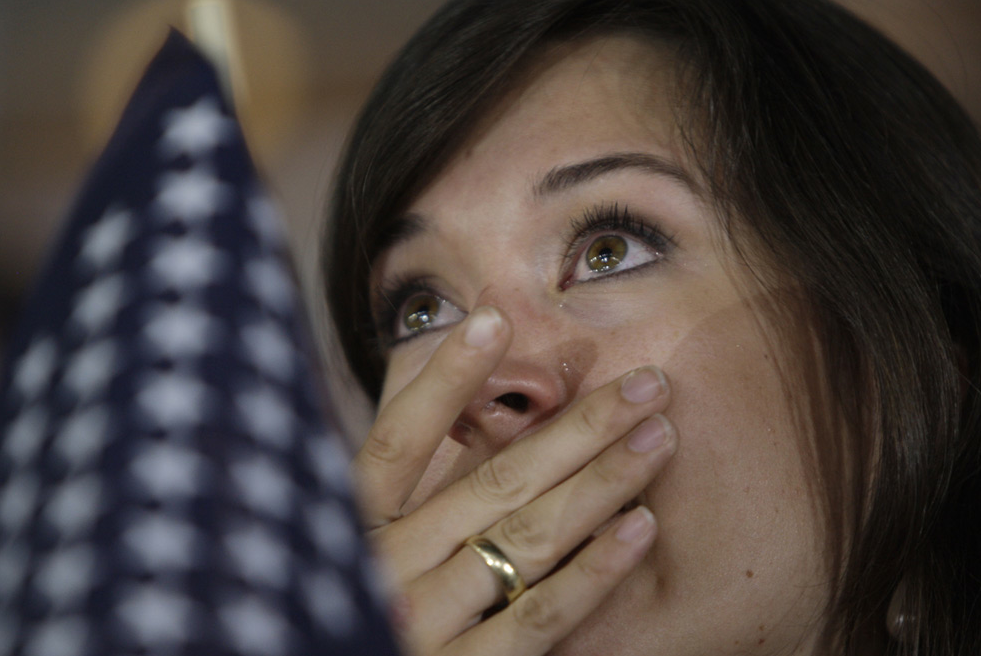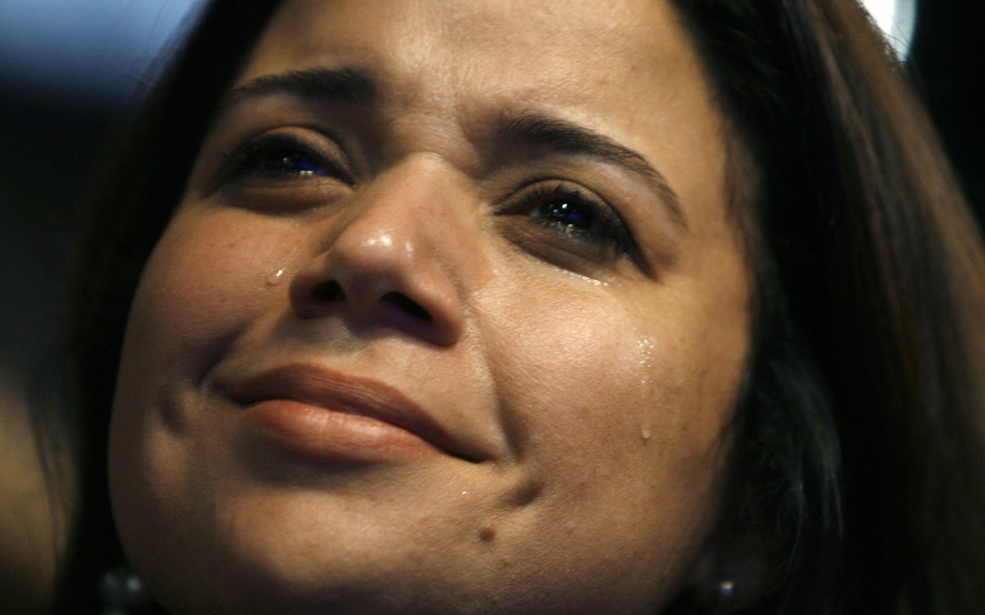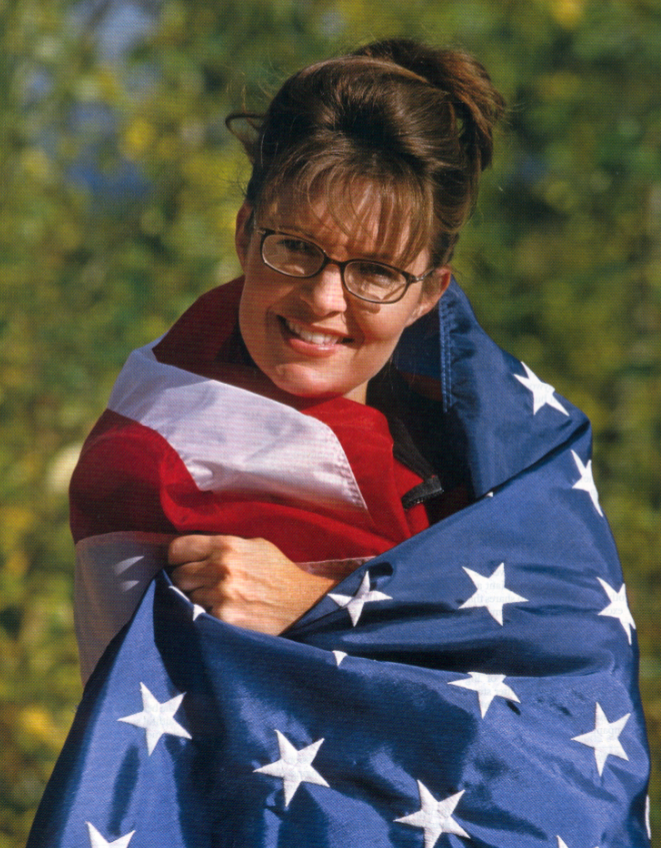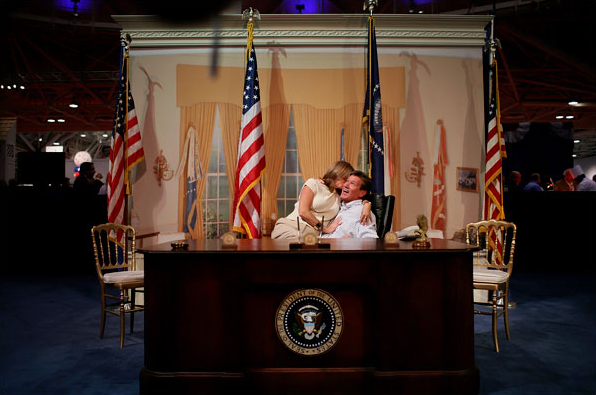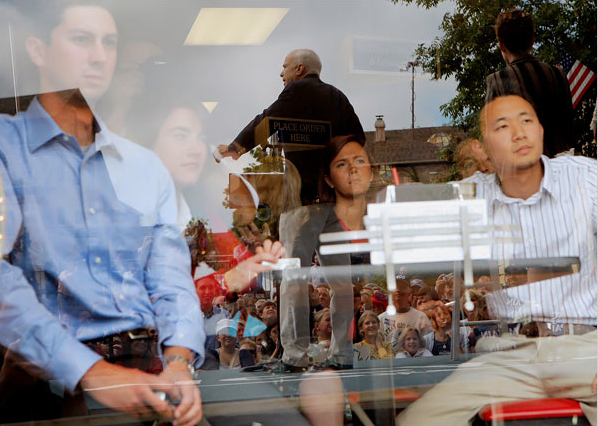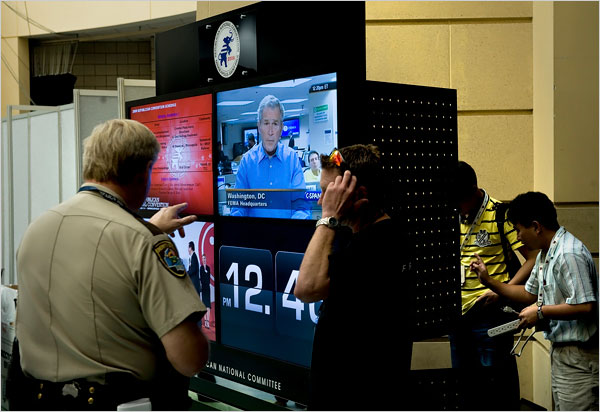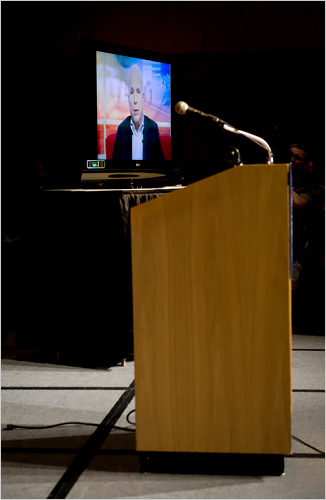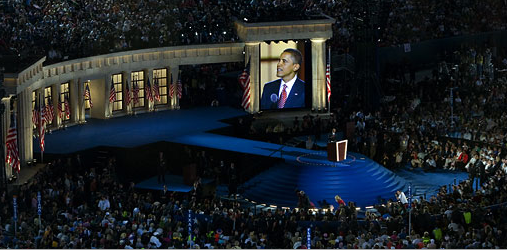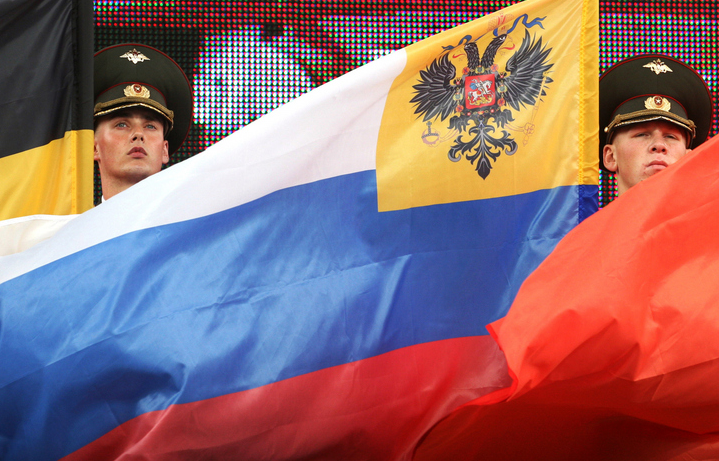A recent slide show at The Big Picture on the 2008 Political Conventions consists of thirty-six photographs oscillating back and forth between the events that took place first in Denver and then in Minneapolis. And what we see, quite clearly, are nearly identical, highly ritualized media events. Most of the pictures are of crowds cheering on their respective candidates or of the candidates and their families themselves. Two images call attention to protestors (interestingly enough both are from the Minneapolis Convention as if there were no protests in Denver) and, as has become the custom in recent years, several images reflexively call attention to the presence of the media itself. What I found most interesting, however, were these two photographs:
Nearly identical images, their captions accent the relevant theme as each describes a woman/delegate “crying” in the presence of the acceptance speech of her chosen candidate. Their passion in each case is palpable and intense, as each woman/delegate looks up to what we can only assume she sees as her political savior. It is the expression of awe one might imagine in the presence of an overwhelming and sublime power, what Max Weber might have called “charisma.” And regardless of what one might think of either candidate, the point here seems to be that the expression of such affect is an inherent part of the political process, an authentic component of the ritual of political identification. Indeed, one would be hard pressed to say which is the Democrat and which is the Republican.*
The very way in which the photographs are framed seems to be telling in this regard. Shot from below and in extreme tight focus the images are cropped to exclude almost all signs or symbols that might distinguish and underscore party affiliation or opposition. Even the two markers of institutional affiliation in the top image – the shield of the U.S. flag in soft focus and the gold wedding band on her hand – call attention to ambiguously normative and largely homogeneous identifications. Republican or Democrat, the images seem to suggest, it doesn’t matter, the expression of emotion in public is inimical to our political being. As such, these two women are something like visual synecdoches for the body politic.
But there is more, for the expression of emotion that they privilege is not only clearly gendered feminine (we don’t see men crying for joy in the images of this slide show, nor do we tend to find them anywhere … and when we do find something comparable, as say with Howard Dean’s famous verbal “cry” for joy four years ago in Des Moines, Iowa, it is clearly vilified as inappropriate and “out of control”), but it is also portrayed in highly privatized terms. Crying, in the western world at least, is typically an individual, not a communal, behavior, and it is generally seen as the expression of a deeply personal, individual psychic state that is more or less anathema to good public policy. The implication here, then, is that such emotional responses are fine—perhaps even to be encouraged as a antidote to apathy and alienation— so long as they are socially disciplined and restrained. And here notice how the woman in the first image wipes away her tears, almost as if to hide them from the outside world, and the woman in the second image seems to be clenching her facial muscles as if to hold the tears back.
One can cry in public, it seems, but to do so is to isolate oneself in some measure from the polity; it is to turn inwards in ways that divorces our “liberal” sensibilities from our “democratic” sensibilities, and in so doing nullifies the otherwise potent potentialities for a genuine “liberal-democracy.” And it is precisely in this sense that the framing of the two photographs fully isolates these women as individuals from the thousands of delegates surrounding them, as well as the synesthesia of collective activity—the chanting and clapping and banner waving—that is the hallmark of such occasions.
What these photographs display then is the incredible ambivalence we have to the presence of public emotion. Whereas in one sense these women seem to channel the body politic, in another, and at the same time, they stand as something of a caution to a too close psychic connection between the individual and the collective. And the question for us is how to negotiate an authentic public emotionality that is not oppressively reduced to and restricted by the normative demands of a privatized, bourgeois sensibility.
* The first image is from Denver, the second from Minneapolis.
Photo Credits: L.M. Otero/AP Photo; Damir Sagolj/Reuters
